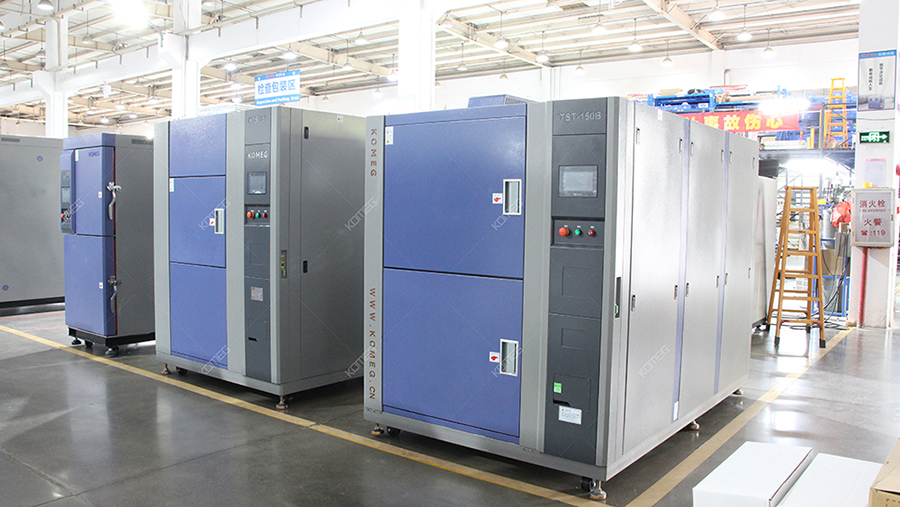The thermal shock chambers can complete the alternating change experiment of natural environment in high and low temperature test, and is an indispensable inspection and experimental equipment in many industries. Applicable objects include metal, plastic, rubber, electronic products, etc., which can confirm the quality of products. From precision IC to components of heavy machinery, it is an ideal test tool.

First of all, let's look at what frost is. It is the result of the water in the air rapidly cooling and crystallizing when it is cold. Frost is small ice crystals, and it is easy to become thick ice when the frost is thick.
The frost source of the thermal shock chambers
The frost in the thermal shock chambers grows on the energy storage components in the precooling zone. We know that the gas flow and moisture of the thermal shock chambers are output through specific channels. During the test operation, the equipment box is in a sealed state, thus forming a closed loop of sealing. When the equipment is simulating the cold and hot environment, the temperature and humidity will change, resulting in the condensation of water vapor after freezing, forming frost or crystallization.
Frosting during the test may cause some bad consequences. If the equipment frosts for a long time, it may also increase the operating burden of the refrigeration compressor, significantly reduce its cooling effect, and even directly affect the reliability of the test results. Therefore, once frost is found on the equipment, it is necessary to deal with the cause in time.
The defrosting method of the thermal shock chambers
Now many experimental equipment have the function of defrosting. Its main principle is to defrost automatically through the low temperature chamber, and then install and change automatically through the solenoid valve. The high temperature and high pressure at the exhaust end of the compressor are introduced into the refrigeration evaporator. The surface temperature of the evaporator is increased by absorbing heat energy, and the frost is turned into water. Then the water is discharged from the test chamber through a fixed channel, so as to achieve the purpose of equipment defrosting.
In general, there are two defrosting methods for the thermal shock chambers. One is to set the time, and the other is to set the cycle time. Most manufacturers and customers rarely use the set time to defrost, because its disadvantage is that the equipment may still be running after the set defrost time is over. During the test, the cycle time is defrosted after the thermal shock test, so it is recommended to set it according to the cycle time.
All cold cycle and thermal cycle impact test rooms have set the defrosting frequency before leaving the factory, such as once every 20 cycles or once every 20 hours. When the number of cycles is reached, defrosting will be automatically performed. Users do not need to modify according to the recommended value. If the customer has his own defrost frequency requirements, the cycle number or time can be modified in the defrost setting of the equipment control system. The range of settable values can be set from 1 to 9999 hours according to the time and from 1 to 9999 times according to the cycle time.
In addition, we try to reduce the opening times of the box door during the operation of the equipment to avoid increasing the frost body of the equipment. Defrosting is one of the common problems in the daily use of the thermal shock chambers. In most cases, you can deal with it by yourself through troubleshooting. You should try to master the method to deal with this situation, so as to better maintain the equipment in the future. If there are any technical problems in the daily operation of the test equipment, you can also contact the after-sales personnel of the manufacturer of Keming directly for communication and handling.





